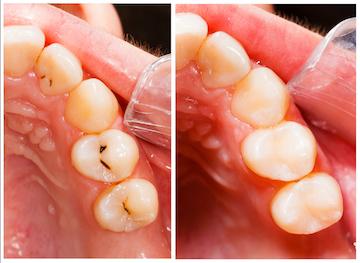Dental Fillings in Columbus, OH
For centuries, silver fillings (called amalgam) have been used in dentistry. Dentists considered them the standard of care for a long time, and it wasn't until recently that we had an alternative. 
Now, the vast majority of dentists place white, tooth-colored fillings (called composite) in lieu of amalgam. Obviously, they look much better than their silver counterparts, but they also overcome other issues that amalgam presents.
What Are the Problems with Silver Fillings?
Amalgam is a strong metal material that can last a long time in your mouth. Over time, though, amalgam fillings break down and corrode. Older fillings can develop a gap between the filling and the tooth, allowing bacteria to leak in and cause cavities again.
Because of temperature changes in your mouth, amalgam fillings also contract and expand at a different rate than your tooth structure, which can lead to cracks. These cracks become larger and larger until a catastrophic break occurs. Unfortunately, sometimes, this breakage happens in such a way that the tooth is not fixable.
Dr. Shiflett uses high magnification and bright lights to check for and monitor these cracks, doing all he can to prevent this. Our team will alert you if they see cracks in your teeth and will recommend treatment, often a crown, to help prevent tooth loss if necessary.
The most apparent downfall of amalgam fillings is their appearance. They are silver and can stain the surrounding tooth structure and soft tissue. While Dr. Shiflett does not recommend replacing amalgam fillings simply due to their color, he will be more than happy to discuss your dentistry options if cosmetics are a concern.




 White, tooth-colored fillings (composite) offer several advantages over amalgam. Composites come in numerous shades and colors, allowing us to get an extremely close match for your teeth. The team at Shiflett Family Dental can even place composites on your front teeth that your friends and family won't notice because they blend so seamlessly!
White, tooth-colored fillings (composite) offer several advantages over amalgam. Composites come in numerous shades and colors, allowing us to get an extremely close match for your teeth. The team at Shiflett Family Dental can even place composites on your front teeth that your friends and family won't notice because they blend so seamlessly!



